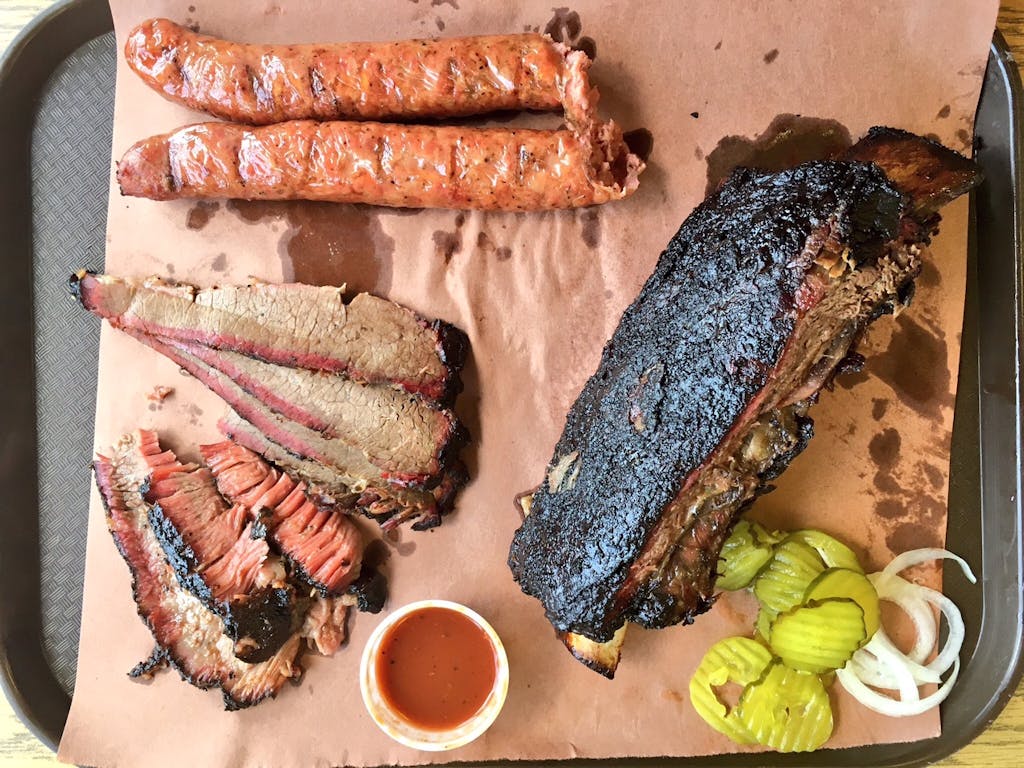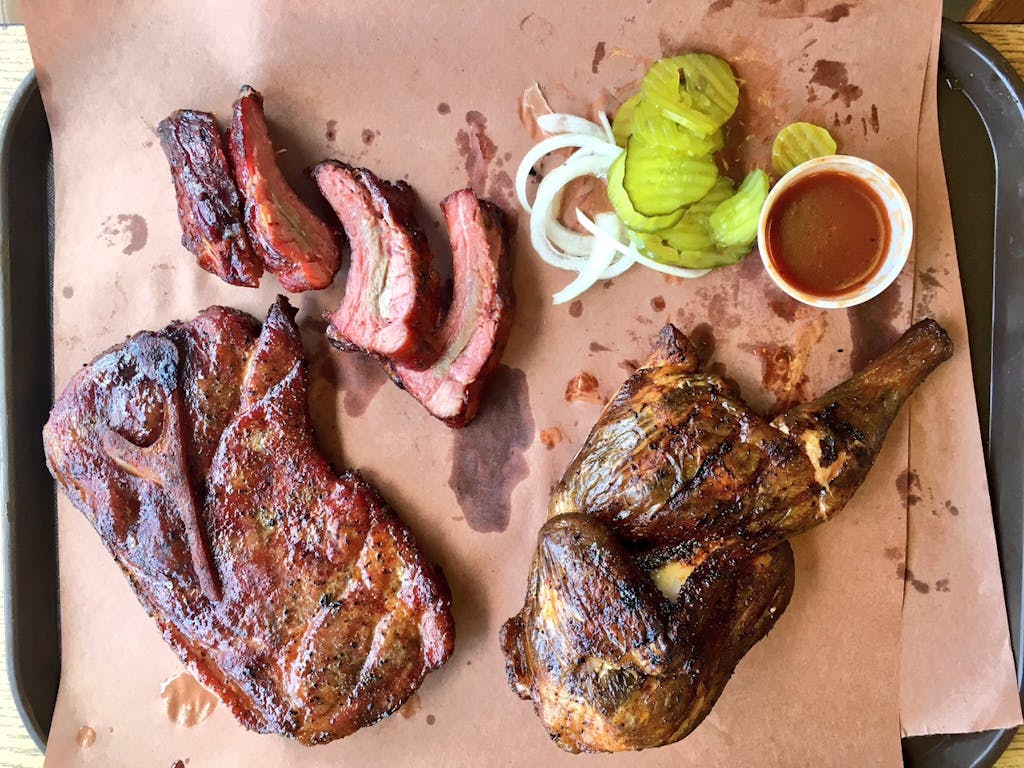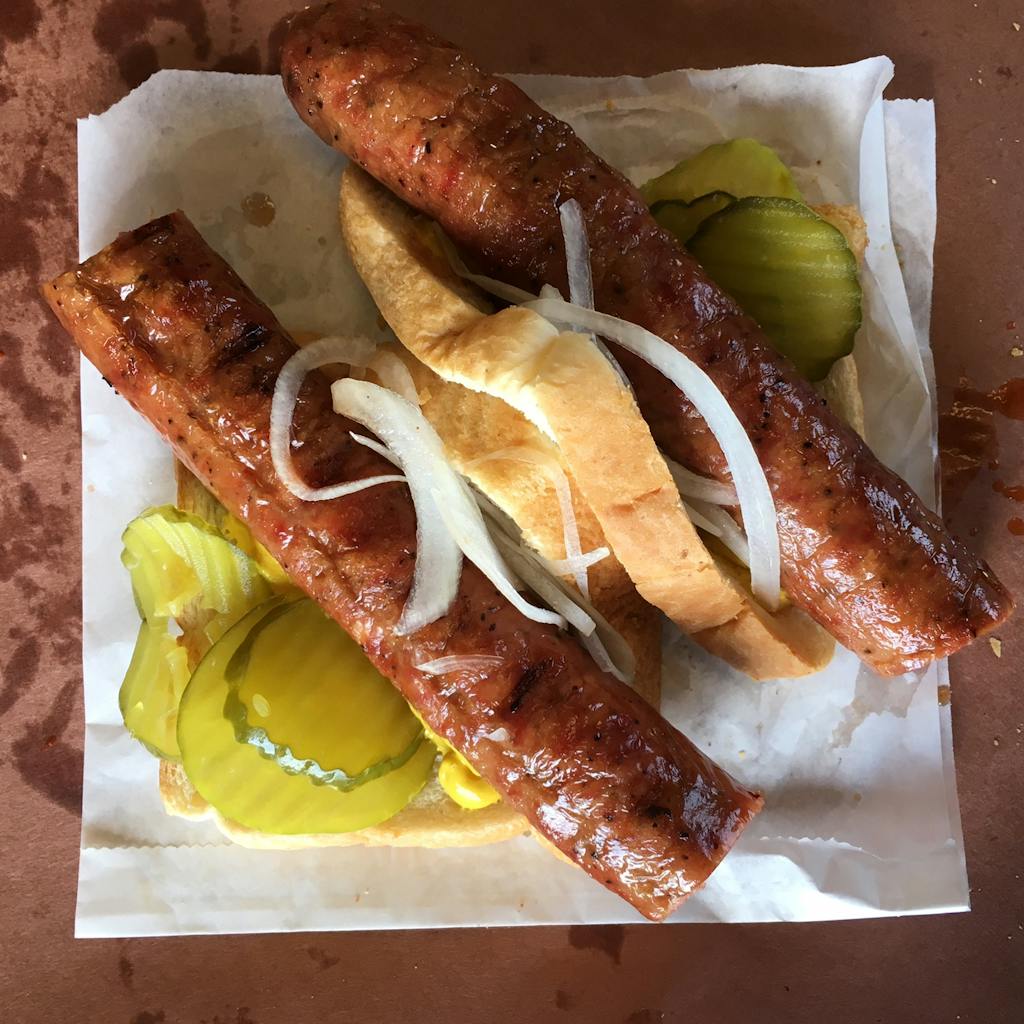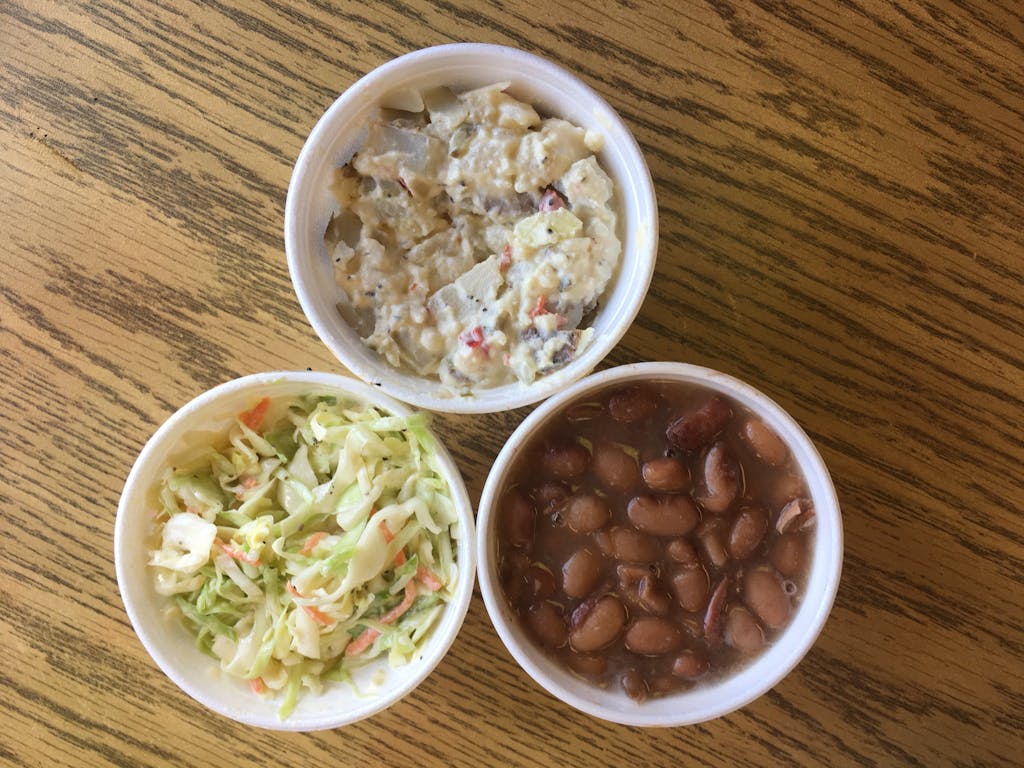Southside Market in Elgin is the oldest barbecue joint in America that’s still operating. We’ve covered its history and obvious importance to Texas barbecue, but aside from its famous hot gut sausage, we haven’t discussed the food. According to owner Bryan Bracewell, maintaining the quality and consistency of the sausage has been the easy part since the first Southside Market opened in downtown Elgin in 1886. “The sausage hasn’t changed,” he says. But just about everything else has.
Bracewell sat down with me in the large dining room at the Elgin location (Southside also has a location in Bastrop). It was a week after an official revisit scheduled intentionally on a Saturday, when Bracewell takes the day off. Over a year ago, after trudging through weeds and thorns at an old cemetery in search of the founder’s gravestone, we taste-tested the new cooking practices Bracewell was trying to incorporate. It was the best barbecue I’d had at Southside, and I’d taken longer than I should have to come back and see how the improvements were holding up.
“In the past five or ten years, there have been a lot of adjustments in what the general consumer expects out of barbecue,” Bracewell told me. As a third-generation owner, he has the unique challenge of continuing to please longtime customers—who are mostly concerned with the cost of their meal—while also impressing barbecue hounds. As he puts it, he’s “honoring the past while also remaining relevant.” That means switching to a better quality brisket and cooking it to a level of tenderness instead of just getting them done enough to thinly slice. “The brisket that we’re making today, my grandfather would have said we’re overcooking it,” Bracewell says. Back then, pitmasters used inexpensive beef and watched the overall yield after cooking. The longer the briskets cook, the more weight is lost to melting fat and moisture loss, so the old method was to pull them early and have more weight to sell.

One of the notable changes for Southside is the quality of beef. Bracewell attributed the shift to three years worth of Foodways Texas’s Camp Brisket—a near annual meeting of barbecue minds at Texas A&M—that made him finally change Southside’s ways. His joint had always used “blue box” Select grade IBP briskets, but at a blind tasting at Camp Brisket, Select grade was always rated at the bottom, and upper two-thirds Choice was at or near the top. After three years of witnessing the taste test results, Bracewell remembers thinking, “If I don’t go home and change, then I’m stupid.” Southside now uses 1855 brand beef, which is upper two-thirds Choice or Prime grade, and it shows. It’s juicier and more tender, and the fatty brisket could hold its own against some of the best in the state. But the upgrade also comes with a higher price tag. At the $17 per pound Bracewell charges, he makes little profit, but the old-timers still gripe about the expense.

Bracewell doesn’t want folks to think he’s trying to be trendy. He’s tried that before. At one point, he concocted a fancy rub for the meats, worried that “salt and pepper didn’t seem cool enough.” Salt and pepper is once again their main seasoning, but the spare ribs and baby backs—which I preferred—both get a little garlic and cayenne too.
Similarly, the pork steaks on the menu might seem like a reaction to their popularity at Snow’s BBQ, our top pick for barbecue in Texas, but Bracewell was a key reason they landed in the Snow’s lineup. When Snow’s owner, Kerry Bexley, opened in 2003, he got his raw meat from Southside (they still have a meat market side of the business). Bexley placed his first order with Bracewell and asked for briskets, ribs, sausage, and chicken. “Then he asked, ‘What else should I be thinking about?'” Bracewell told me. He suggested Bexley try pork steaks, and a Texas barbecue favorite was born. At Southside, the pork steaks are cut a bit thinner. They’ve got good smoke and tenderness, and are great with a dash of hot sauce. I also love the smoked chicken, which is some of the juiciest you’ll find.

Even as the menu has grown over time—there are at least ten proteins to choose from—the sausage still reigns supreme. It’s a very juicy, or fatty, beef sausage, so I’d suggest asking for it dry. That used to mean yesterday’s sausage, and at some joints the term is reserved for overcooked links. But at Southside, it’s sausage that has gone beyond plump. Maybe it got stuck with a fork, or the casing popped, but somehow a portion of the fat has drained off, with a browner casing that has a better snap. Bracewell explains that the dry sausage spends about three extra minutes on the grill, which is a higher heat smoker dedicated to sausage. Links go through an initial smoke in the enormous sausage factory in the back, but it isn’t finished in the smoker alongside the brisket and ribs. It isn’t hung, either, but is instead cooked flat on a grill grate inside tile-lined smokers.
There’s a special cut smoked every day, so pay attention. Monster beef ribs come out of the smokers on Saturday morning. Mine was cooked way beyond tender, but had great smoke and flavor. I snagged a few slices of their excellent pastrami on the Tuesday I met with Bracewell.


Classic versions of pinto beans, slaw, and potato salad will make any purist happy. Desserts are old favorites too, but done perfectly. Banana pudding is scooped out to order, topped with whipped cream and crunchy Nilla wafers. Peach cobbler is close to a cake in consistency and depth. It comes à la mode, and you get to choose from an array of Blue Bell flavors. I giddily requested a scoop of banana pudding flavor, and would highly recommend the pairing.
I first visited Southside Market a decade ago, and aside from the sausage and history, it was hard to see the allure. The barbecue has steadily gotten better since, but this latest jump in quality is a big one. Bracewell said he’s been focused more on what goes on in the pits, and his concerted effort to improve the barbecue is noticeable. He said he feels like they’ve turned a corner, but admits that it’s hard to find consistency from the first brisket of the day all the way through dinner service. Still, he keeps his grandfather’s words in mind as he keeps pushing: “You’re either growing or you’re dying. There’s nothing in between.”
*The business’s claim of “since 1882” is based on when the founder first started selling sausage, but they say the first butcher shop opened in 1886.
- More About:
- BBQ Joint Reviews








